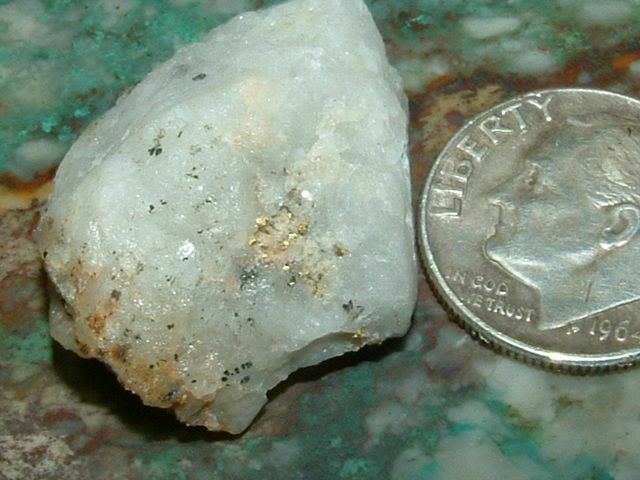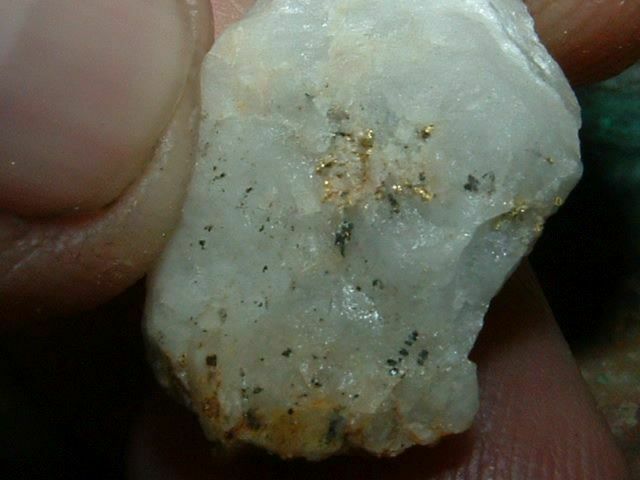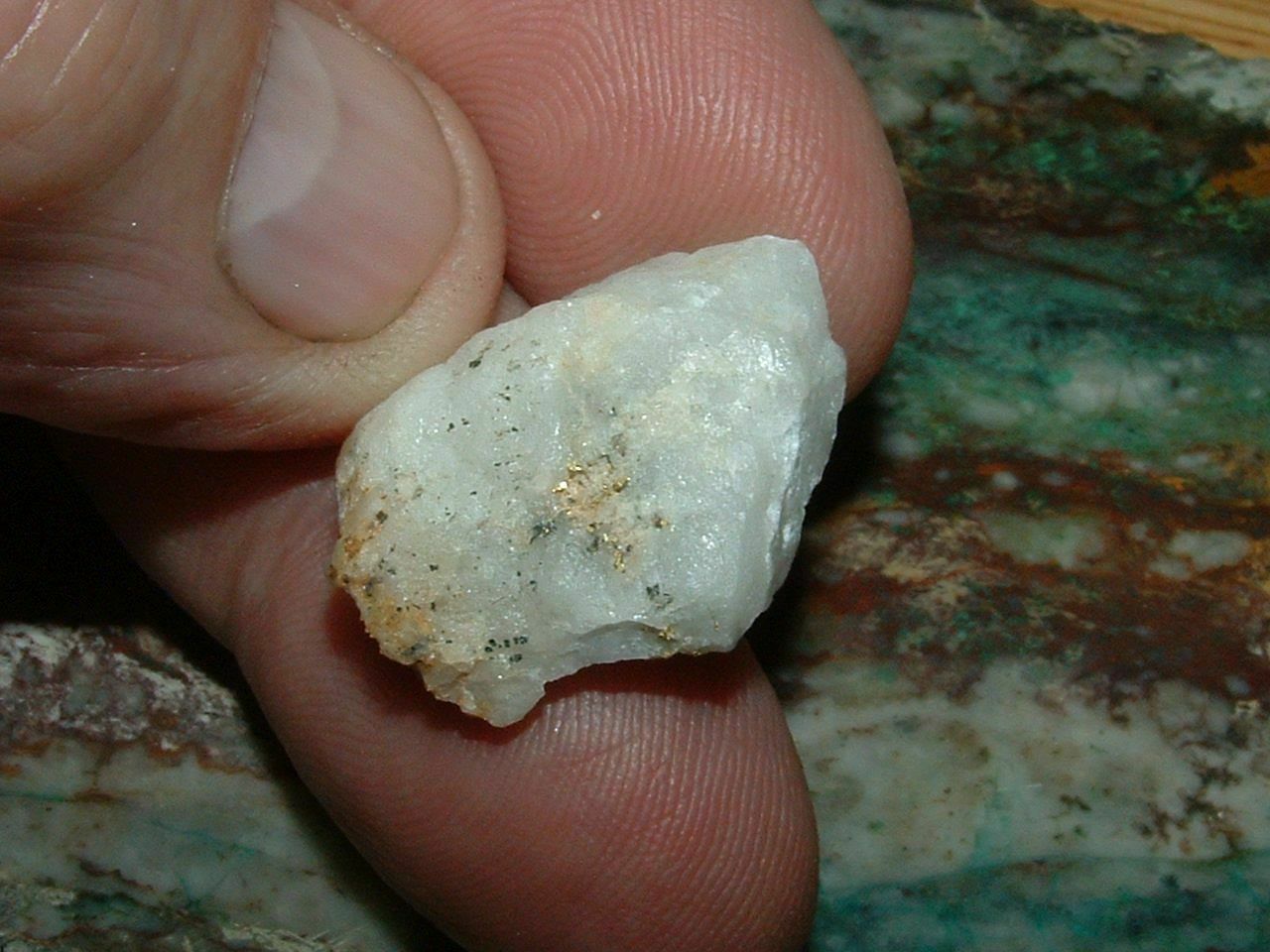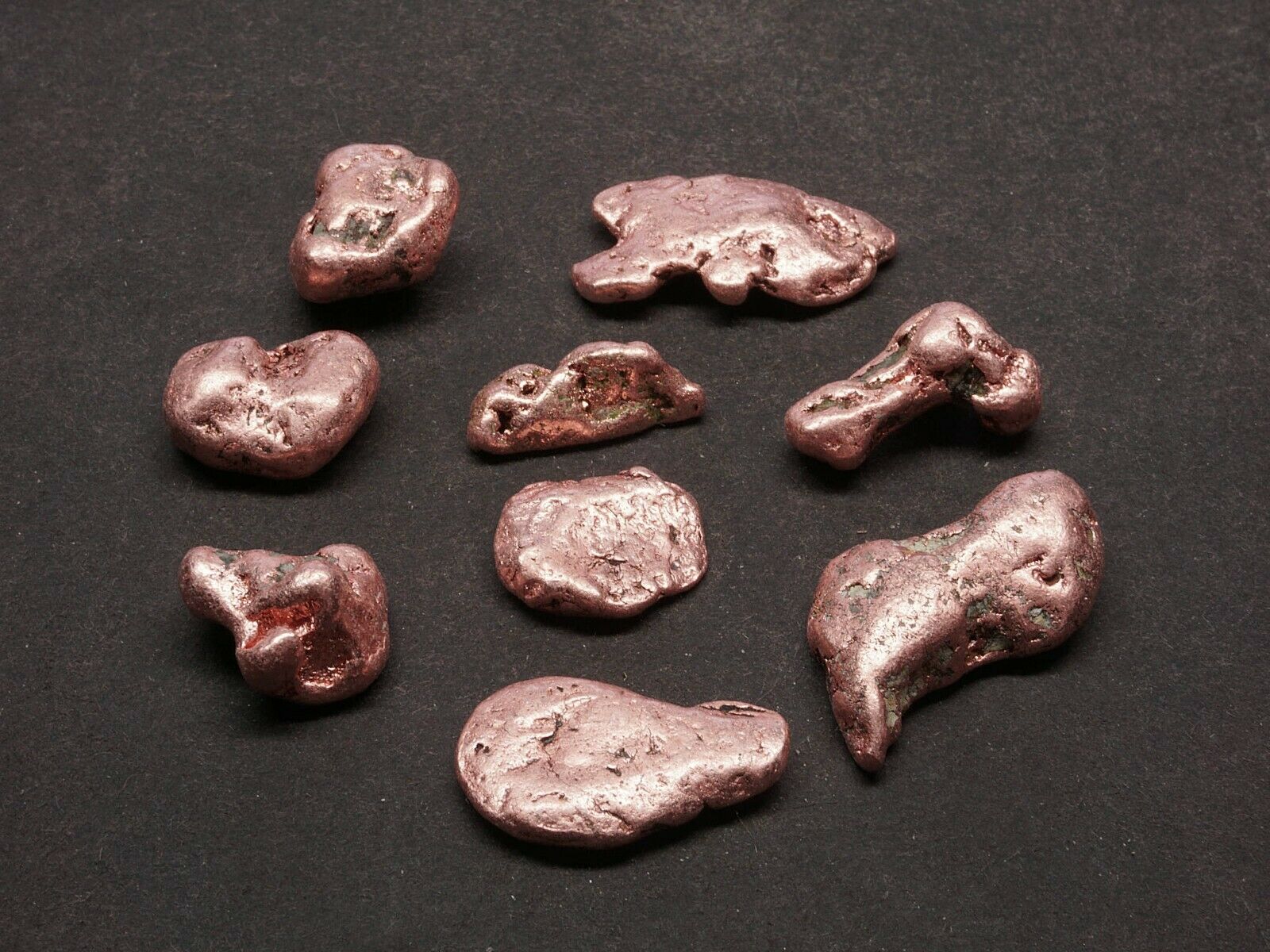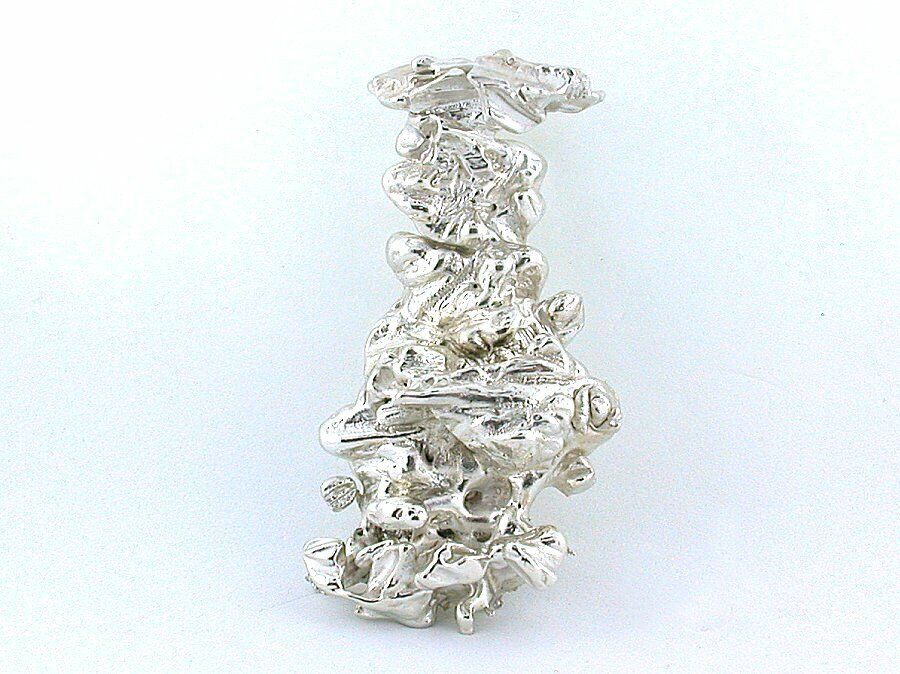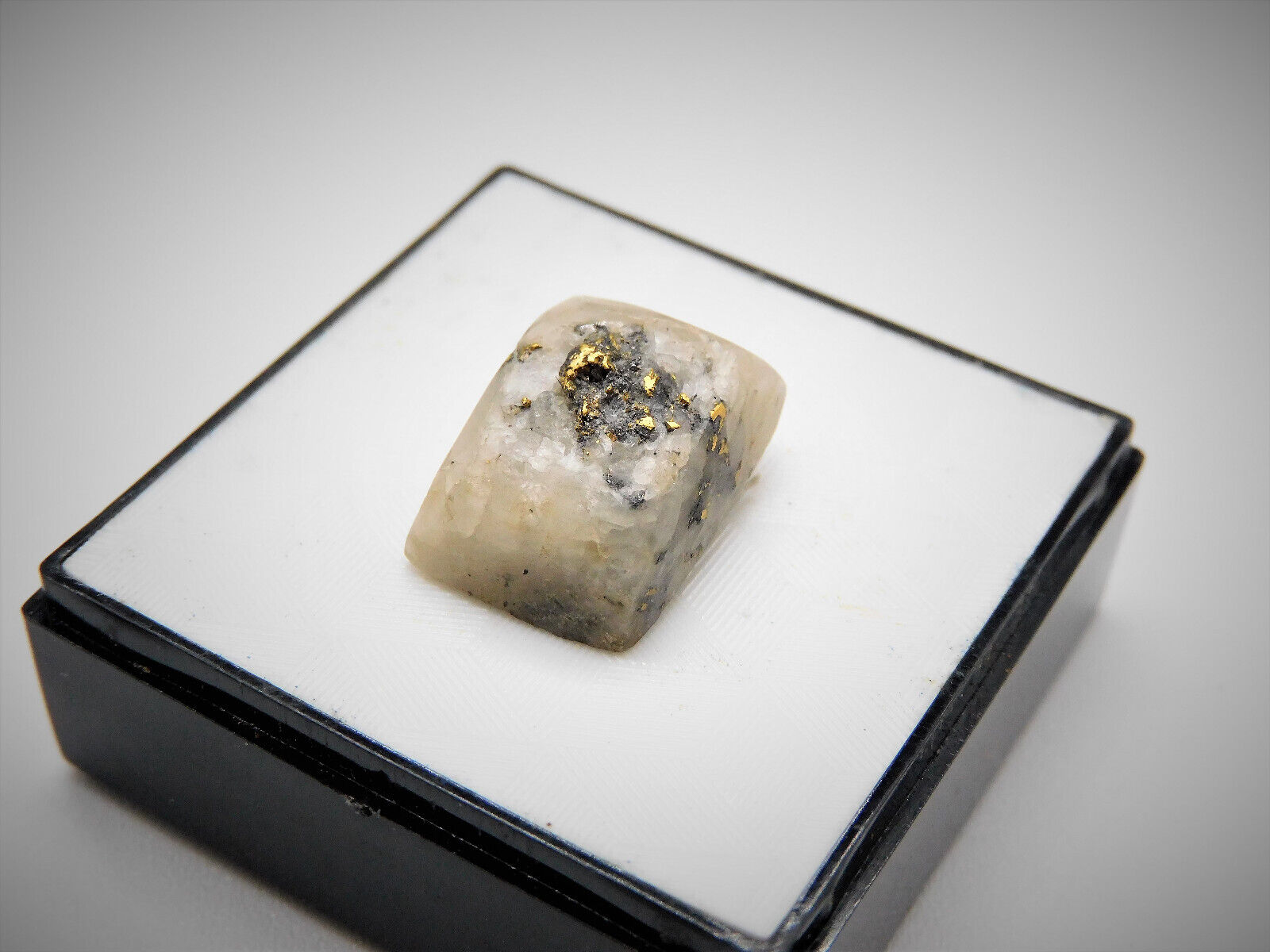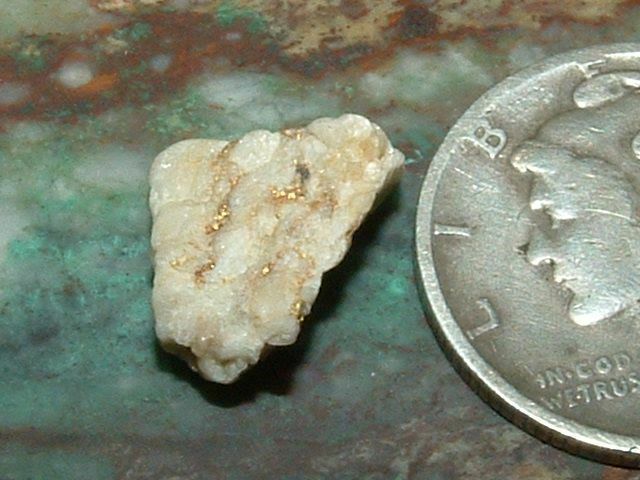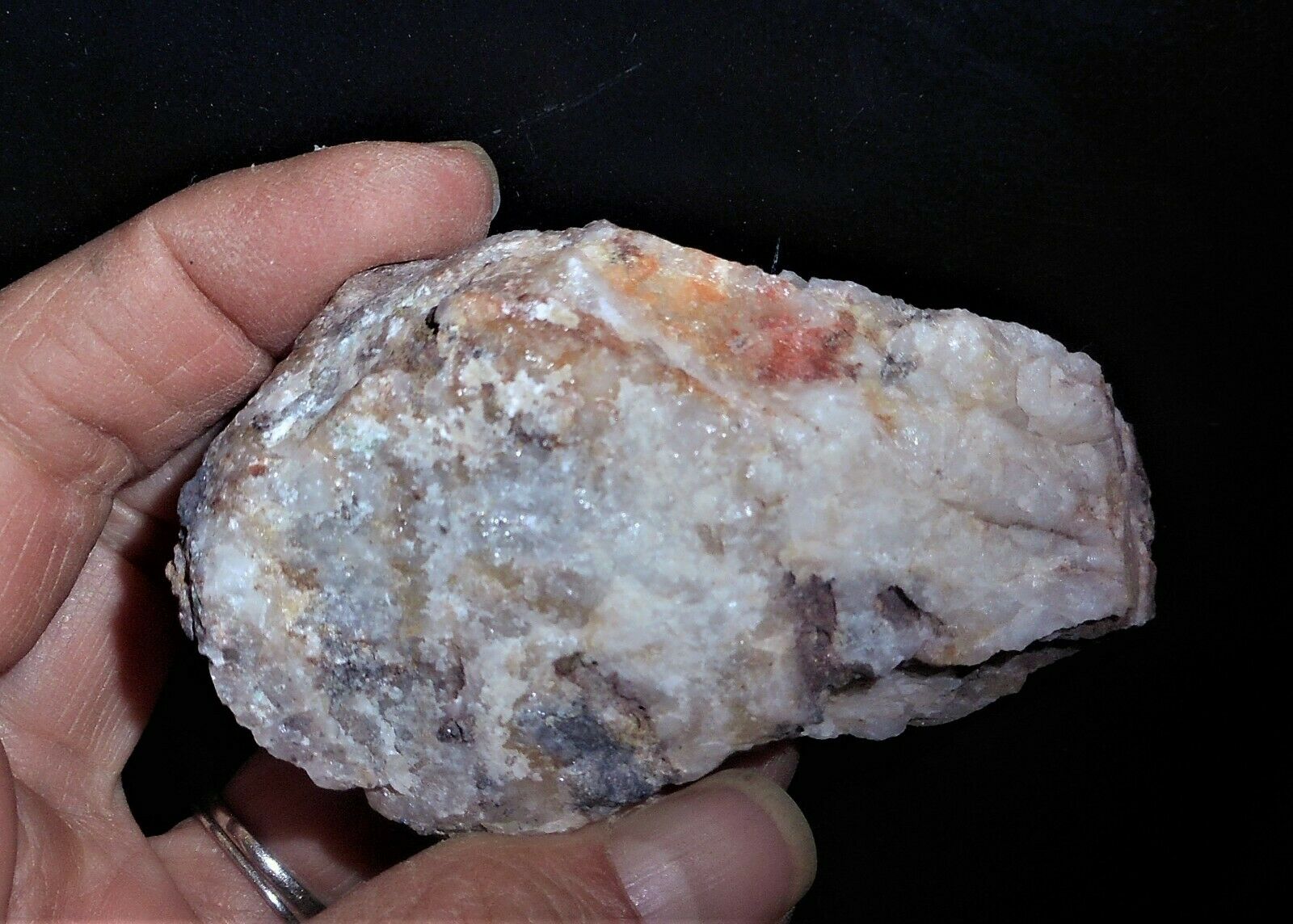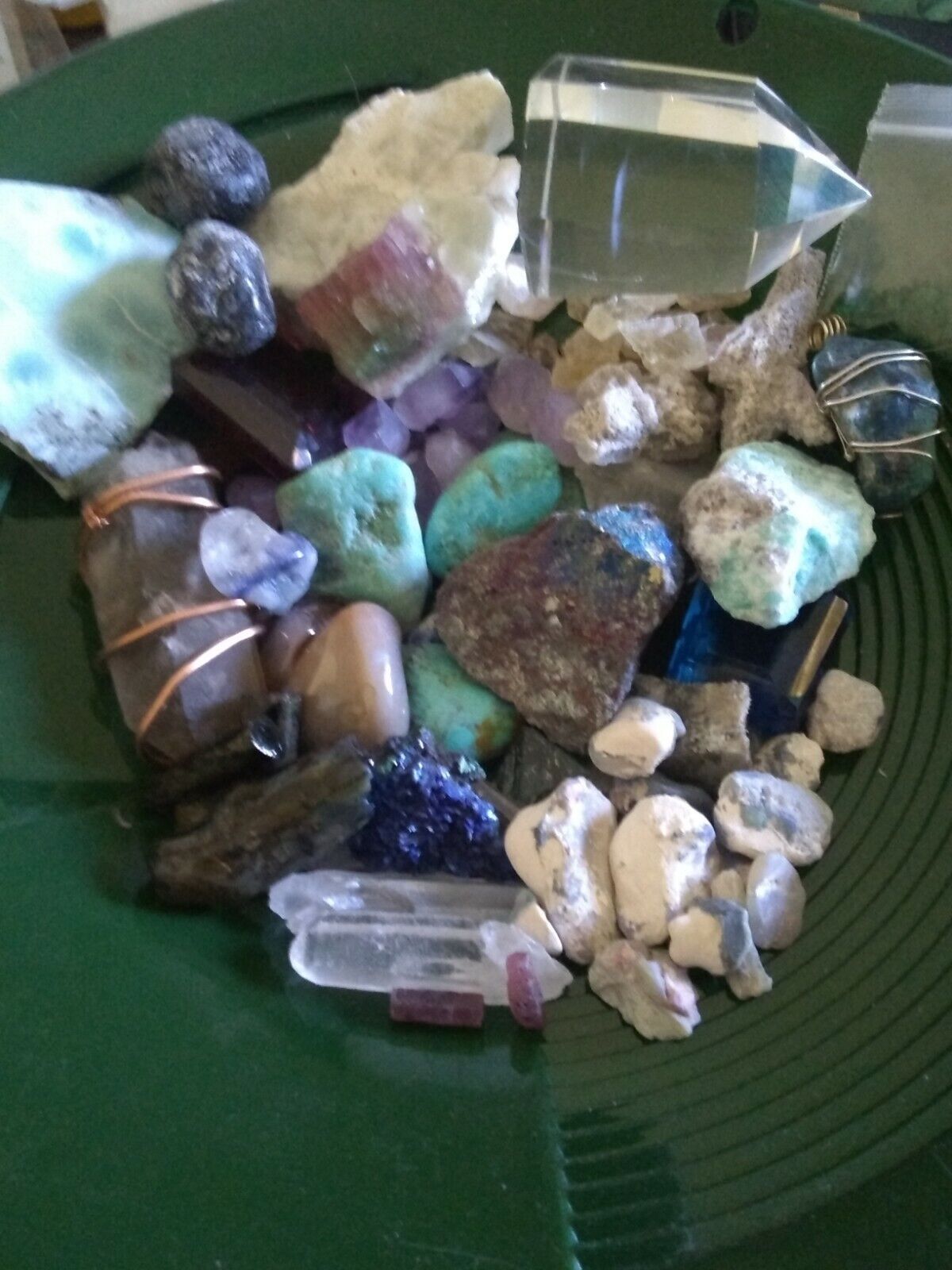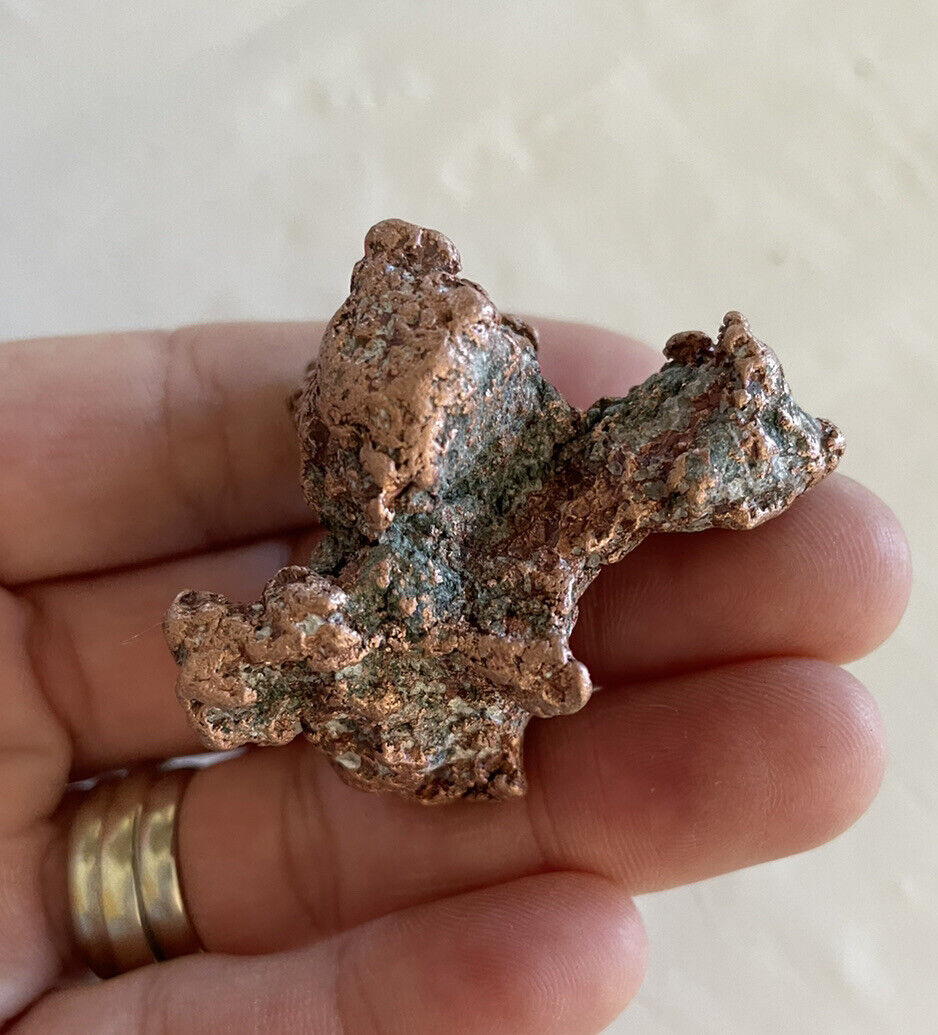-40%
CALIFORNIA ROCK GOLD QUARTZ SPECIMEN NATURAL GOLD IN QUARTZ 5.5 GRAMS
$ 21.12
- Description
- Size Guide
Description
NATIVE GOLD QUARTZ SPECIMENfrom the
MOTHER LODE
R
uler is
1/4"
wide (6 mm). U.S. 10 cent coin is 17 mm in diameter.
S
pecimen weight:
85.5
G
rains (Troy) -
5.5
G
ram
S
ize:
24.9X20.3.3X10.9
mm
C
heck out this rock from the Sierra Nevada Mtns. The white, slightly-stained quartz shows one patch of gold crystals containing roughly 8 exposures of oro. At one end can be seen a zone of small, drusy white and yellow quartz crystals. The oro showing near the middle of the specimen is golden in color indicating high purity. I guarantee these gold inclusions (and all the rest) are naturally-occurring.
Every one of my specimens show visible gold and are
authentic
gold nuggets or gold quartz specimens. GQ specimen prices are based upon their rarity and collectibility.
U.S. SHIPPING - .00
(includes USPS tracking to all U.S. destinations)
INTERNATIONAL CUSTOMERS S&H
.00
FAST REFUND OFFERED
(If, for any reason, you're not happy with this item). Contact me indicating you wish to return the item. As soon as it's received by me and everything's as it should be, you'll be issued a refund.
I poured through old mining dumps for years looking at orange-yellow-rusty rock through a loupe, but I never found a piece with visible gold.
Hydrothermal solutions carrying gold and silica crystallized into veins of gold quartz. This specimen comes from one of the many vein systems sourcing the immense placer deposits of the Sierra Nevada Mtns, the famed Mother Lode.
Weight Conversions:
15.43 GRAINS = 1 GRAM
31.103 GRAMS = 1 TROY OUNCE
24 GRAINS = 1 PENNYWEIGHT (DWT)
20 DWT = 1 TROY OUNCE
480 GRAINS = 1 TROY OUNCE
S&H
Discounted for combined shipments.
PAYMENTS
For U.S. buyers: We accept paypal
For intnl. customers: We accept paypal.
Pay securely with
www.paypal
.
Payment must be made within 7 days from close of auction. We ship as soon as funds clear. If you have questions, please ask them before bidding.
REFUNDS
We leave no stones un-turned insuring our customers get what they bargained for.
If you're not satisfied with this item, contact me. Then, if the problem can't be fixed, return product within 30 days in 'as purchased' condition for a full refund
PLACER DEPOSITS, REDEPOSITS, AND TESTING
by Gene Ralph
I
n the lower 48, if the drainages exiting a gold district held good placer deposits, chances are good the old time miners hammered them, but glimmers of hope remain.
Few old placer
diggings have been completely worked out.
With today's gold prices, chances of making a claim pay are much improved. Most importantly, of course, ample gold needs to be present. Many placer deposits are minute, confined to a single draw, creek, ravine, arroyo, or narrow pediment situated directly below an isolated vein, mine, or outcropping lens. Maybe there's an ounce of gold still in the ground missed by the old timers and if you can find it, hey! That's a pretty nice score; but you may not wish to spend an entire summer of mining to get it. Based on my own experiences, it's realistic to say a good many claims which have already been worked will not contain ten ounces total in minable gold. If you have one of these and you're determined to get every speck, be prepared for a long stay. A person can have just as much fun mining these smaller deposits recreationally than some serious-mining types who expect, nay...demand much more copious amounts of oro. Considering the number of prospectors who scoured the western hills, chances of someone finding an untapped drainage full of readily-minable gold really aren't that hot. Suffice to say shallow gravel deposits always have been easier to mine than deep alluvial deposits.
By the time they finished, the old timers pretty much picked them clean.
Still, of the many claims I've worked to varying degrees, it was rare not to be able to scare up a little gold somewhere. Due to inefficient recovery methods, decent gold can often be found in old tailing piles. "Gold is undisputably where you find it and nowhere else!" a considerable re-concentration of values can accumulate during a one hundred and fifty year interval. That could be how long it's been since miners from another era worked a deposit. Such long periods of weathering can account for excellent redeposits in washes and creek-bottoms, bedrock cracks, crevices, even surface gravels. In all fairness to the old timers, modern day mining methods haven't improved that much in terms of recovery rates. Drywashers are still just drywashers. A sluice is only a sluice. Gold can flush out of a box with too large a head of water running through it or easily bounce over dry-washer riffles set too steeply. These tools and systems utilize the same principles for separating gold from gravel they did a hundred or a thousand years ago.
Many times, I've found strips of un-worked side channel running alongside primary washes or creeks. Sometimes, these stretches are made up of undisturbed virgin gravels. This 'side pay' can lie at approximately the same elevation as the main creek or wash bottom already worked by the old timers or they can be high bar deposits, sediments hidden along upper levels of a drainage. There's nothing quite like working virgin ground. Finding an untapped placer deposit represents one's best chance for making a truly spectacular discovery. Witness the thousands of ounces being mined by TV's Gold Rush miners. Most of the gold they are mining comes from virgin ground. I've not many experiences working virgin gravels, to be honest. My best redeposit success stories came about from dredging flood-gold surface gravels in heavily-worked rivers or by dry-washing the deepest parts of remote, desert washes.
During intervening years, intermittent high waters continue to erode creeks and riverbanks. Turbulent waters at flood stage cut through old tailings, abandoned diggings, and, possibly, virgin clip zones. A violent desert gulley-washer can dramatically rearrange sediments in a wash or canyon. New gold is thus re-concentrated. It's been born out by personal experience that the lost gold of yesteryear is still replenishing drainages. Be advised, however, this may not be a significant amount of gold. It all depends. Finding traces here and there isn't going to cut it for big operators, but it might be enough to satisfy 'the itch' of many a small-scale, artisanal, or recreational miner.
Deeper, more-expansive alluvial fields, fans, plains, valley floors, et al may cover many linear miles of distance. This means untapped potential in far-flung areas where prudent prospectors, through diligent search, might find un-searched ground worth mining. With regards to
virgin placer deposits, the depth of ancient channels, the extreme density (consolidation/compaction) of alluvial packs, and/or highly-concentrated boulders often make thorough testing a virtual impossibility. In some ways, this applies more to operators using heavy equipment than it does to artisanal, manual miners who find ingenious ways to move massive rocks, who will climb rugged, vertical terrain to hand-test cemented gravels suspended above on high terraces or benches. Small scale miners are known to tackle the dubious job of climbing, crawling, and digging far down into the bowels of the earth to excavate highly-cemented and compacted clays or caliches by hand one spade-full, one bucket-full at a time. In the case of deep channel deposits, with who knows how many feet of sediment layered on top as overburden, far below, much untested material just above bedrock may remain buried from sight out of reach. Even when armed with massive excavating machinery, such conditions pose major challenges to operators attempting to test potential pay-layers in deep, virgin, placer ground. The old timers often sunk vertical shafts by hand wind-lasing dirt up from a hundred feet or more as they attempted to discover leads of gold-bearing ground far down on bedrock. Historical accounts reveal that in many mining districts, fatalistic miners of old, impervious to the dangers, did indeed encounter rich gravels. Many, most certainly, must have perished from cave-ins.
In gold country, one never knows what values lie 5 feet inside an 80 foot deep stretch of remnant channel whether at the bottom of a gorge or stranded high up on a mountainside. Make no mistake, the 'giants' of yesteryear blasted away a lot of the best ground, but, without question, they did not get it all. No one can say for certain or determine what was left without running tests. The same question is asked surveying a twenty mile long stretch of river-bottom hammered by bucket-line dredges a hundred years hence. What did they unintentionally leave behind? What kind of values were vacated on bedrock? Were coarse nuggets classified and discarded? Are there large expanses of un-worked channel still down there now covered with tailings or boulder piles? Questions. Always more unanswered questions for the weary prospector.
Finding both paying redeposits and virgin pay takes thorough testing. The onis is on you to make that determination. Wherever the goldfield, sediments must be sampled for gold across their entire width whether it's a creek, river, dry-wash, alluvial fan, or pediment. A pan sample now and then at bedrock isn't going to cut it because pay-streaks meander. They are typically irregular, spotty, and non-uniform. One might even say unpredictable. When testing any drainage, it's very easy to miss the pay-streak entirely even though one may exist in that stretch. Incomplete sampling is the bane of the inept prospector. Don't think placer gold deposits are only confined to material on or close to bedrock. This is especially true in the case of desert placers and in massive river systems where regular, seasonal flooding can leave behind serious redeposits of gold just beneath the surface. You always have to wonder, if a redeposit is this good on the surface, what the heck would a guy find at those same sites down on bedrock? Of course, there's not a way in hades you could ever reach bedrock at those locations. I dredged with a six inch dredge for years. That frail little barge hardly makes a dent on a twenty foot deep mass of alluvium. If you're familiar with mountainous terrain, you realize what a tall order comprehensive sampling is, an impossible task in many cases. The linear and vertical scale encountered in canyon-lands makes for impossible testing conditions due to the sheer volume of gravels at any given locality. Only operators loaded for bear outfitted with monster excavators, cats, front-end loaders, and such can open up and test such ground effectively. Here, I'm referring, of course, to dry-land, above-the-water-table gravel deposits. Even then, nothing is assured. The general rule is that the best pay-dirt will be concentrated on, in, and just above the bedrock of old river channels. This is not to say good ‘pay’ can’t be found in other stratified layers higher up in the sedimentary column. The famous ‘blue leads’ of British Columbia and the Yukon remain classic examples. In many instances, excellent flood gold re-deposits are encountered in the uppermost strata of the most recently-deposited stream/river gravels. Anything goes in desert and pediment-type deposits. In drier climes and areas where shallow-seated lode deposits continue to shed gold, placer gold is found lying very close to the surface. These represent readily-available targets to MDers hunting the many dry regions of the world.
Sampling and not finding anything can be disheartening, but stopping too soon during one’s test phase means that if a pay-streak’s hidden somewhere on your claim(s), it can easily be overlooked. Now, with current higher gold prices, there are potentially valuable gold deposits in many sedimentary formations which weren’t formerly profitable to mine. Ancient auriferous channel remnants can be virtually anywhere and often have been found miles from younger, flowing waterways. Mammoth lode copper deposits, producing gold as a by-product, are notorious for having released enormous amounts of placer gold in the distant past. Such lodes tend to be quite complex and varied in their mineralogical makeup. For what it’s worth, the Comstock Lode was discovered originally by placer gold miners who had no idea the dark-colored stuff they were discarding from their small-scale operations was actually silver ore. Extensive sampling is critical. Don't forget, if you save ten thousand dollars by 'not' purchasing a poor claim, you've thousands to invest in a promising claim elsewhere. Do you understand now how important a comprehensive testing program is?
Thanks for checking out our digs.
G
old of
E
ldorado
8-13-17
